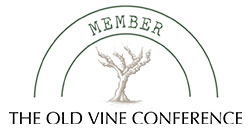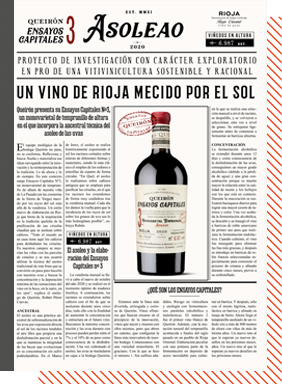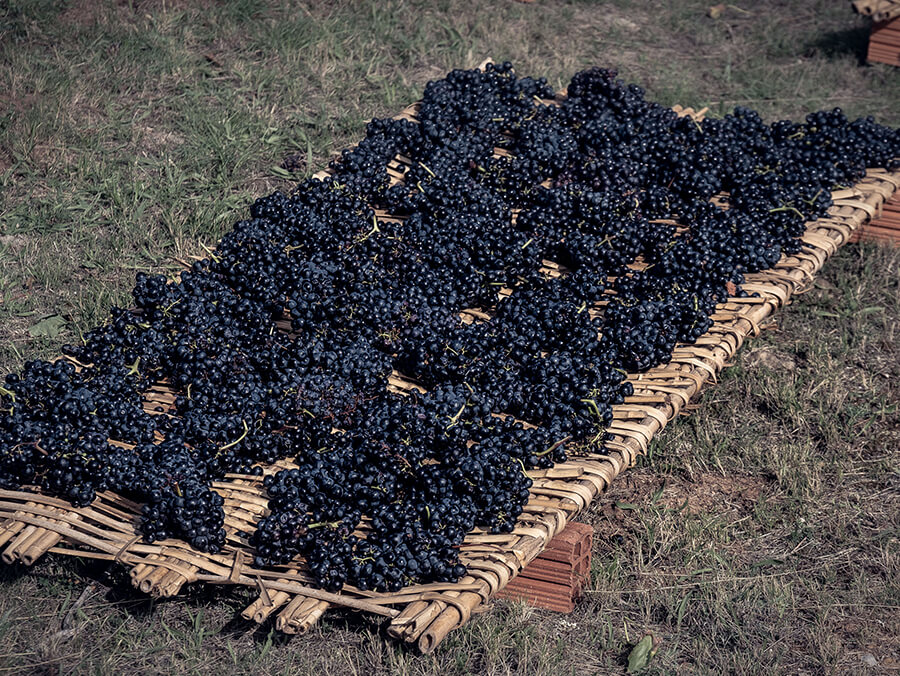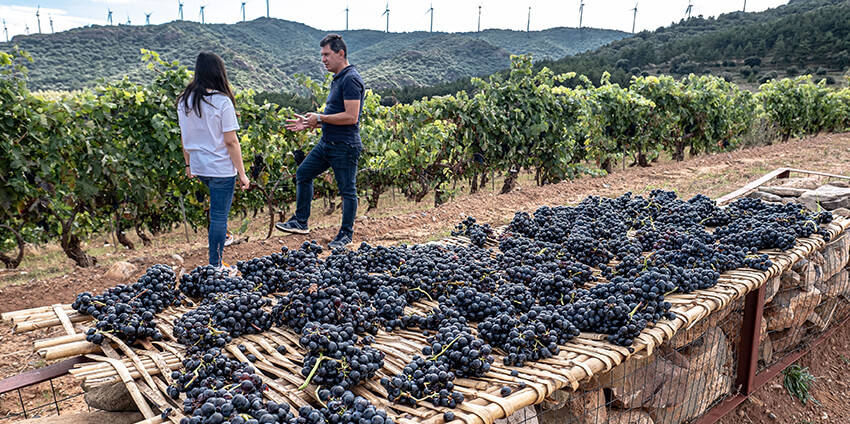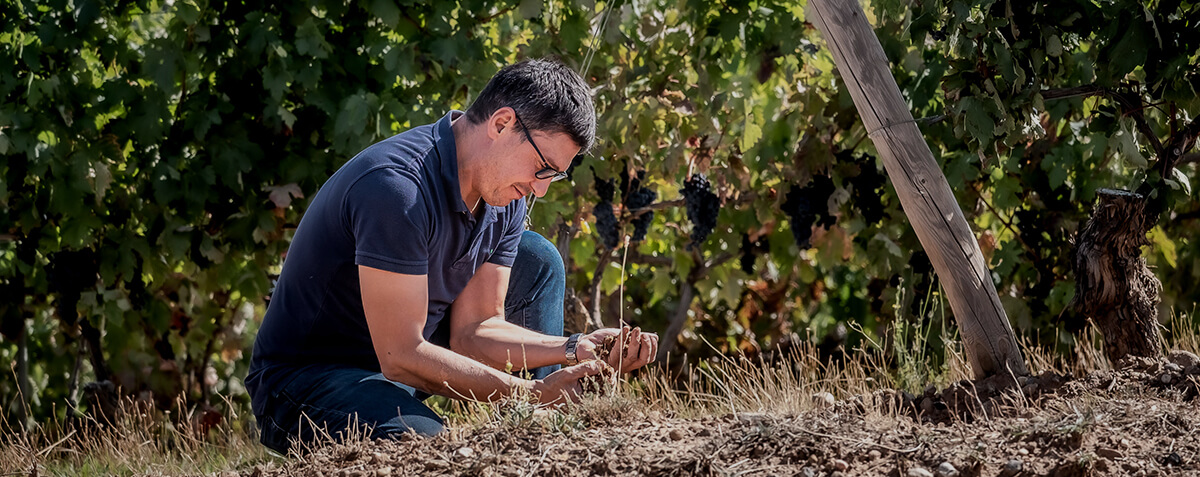A Rioja
wine cradled
by the sun
Queirón present their Ensayos Capitales Nº3, a high altitude varietal tempranillo which incorporates the age-old technique of exposing the grapes to the sun
The Queirón winemaking team never stops, is never satisfied. It reflects and searches. It dreams and turns its ideas into reality by steering between innovation and the rethinking of tradition. The here and now and more of the same. This is the background to Ensayos Capitales Nº3, a high altitude varietal tempranillo from our La Pasada vineyard (among the crests of the Sierra de Yerga) cradled in the sun’s rays well beyond the harvest.
A new style of winemaking in Rioja inspired by the Quel tradition of sun-drying their greengage plums which are exposed to the sun on cane hurdles.
“Everybody here has these cane hurdles at home for drying plums. In our fields the vineyards are interspersed with plots of greengage orchard, so it occurred to us that we could use this fruit’s traditional sun-drying method for turning them into prunes for our grapes as well, in pursuit of greater concentration and the ultimate purification of the wine’s sensation on the palate, on the nose and on the eye”
Rubén Pérez Cuevas, enólogo de Queirón.
Age old practice
Sun-drying is an age-old practice for over-ripening the grapes by direct exposure of the clusters to sunlight, spread out in the open air so as to encourage partial dehydration in which the berries remain intact but with an evolution in their concentration without beginning to rot.
In the Sherry-making context, exposure to the sun was historically carried out with harvested bunches of grapes laid out on mats of different forms and materials, with the most classical being the use of circular straw mats made of esparto.
“In Quel, the sun-drying is done on old cane hurdles which are used for drying plums, on which we carefully lay out the clusters after manual picking. We turn them over every day so that the rays of the sun have the most even effect on the grape berries as possible“, Rubén stresses.
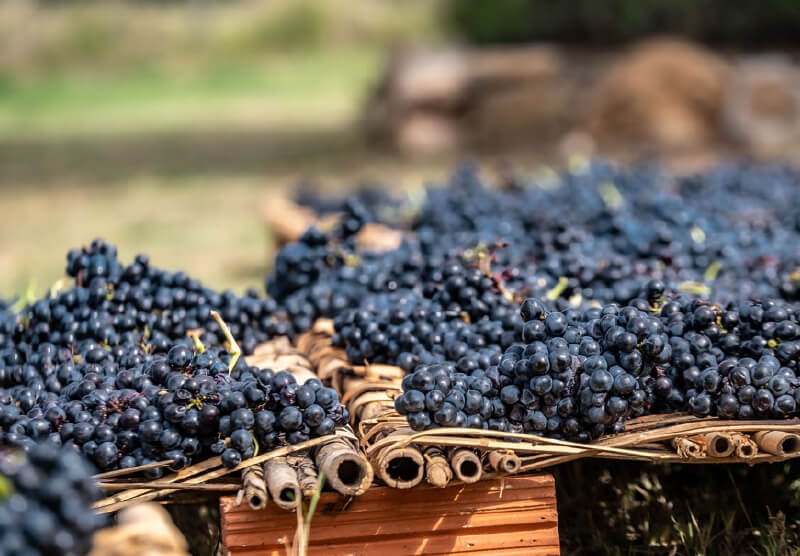
A complicated year for the Rioja vineyards.
The quality of the harvest was conditioned by a degree of instability in the weather during the lead-up, with average rainfall of over 550 (high compared to other years) and problems such as hail.
After explosive early budding, the end of the cycle saw a stable berry-weight, higher than in 2019, and perfect phenolic maturation. The light rainfall in September and winds entering from the north, with a fall in night time temperatures, ensured better balance and improved the quality indicators.
The quality of the grapes improved with the passing of the days prior to harvesting.
vintage
Datos técnicos
Ensayos Capitales nº3
Asoleao
RAE Dictionary Definition
To expose something to the sun for a certain time.
What the sommeliers and chefs
we have consulted have to say about
the idea of ASOLEAO for our
Ensayos Capitales nº 3.
Chefe Paniego, ECHAURREN (MICHELIN)
“It is a wonderful story. When I take a bottle to propose to diners I need to go further, to be able to tell a story. And being a sun-dried wine is a new narrative. Something different. I love it”
Carlos Echapresto, VENTA MONCALVILLO (MICHELIN)
“There is nothing remotely similar in Rioja; what defines the wine is the grapes’ exposure to the sun after the harvest and before vinification. In addition, it represents a nod to Sherry, to their impressive wine culture”.
Ernesto Jesús Cruz, ÍKARO (MICHELIN)
“The first Ensayos Capitales really impressed me. Now this sun-dried wine seems amazing. I am Andalusian, I love the culture of Sherry wines from Jerez and it is really something for a Rioja wine cellar to be inspired by the winemaking methods of my home region. Keep going with the name”.
Jorge Rodríguez, sumiller de LUMBRE
“I love the name because it encompasses so many ideas which I can tell the customers at the table”.
Two more people we have asked to comment about Asoleao are Félix Jiménez, the chef at KIRO SUSHI (MICHELIN) who explained that the name seemed very evocative and that this special way of making wine was a great idea worthy of inclusion on restaurant wine lists, and Fernando Sáenz, ice-cream maker of DELLA SERA, also stresses the importance of making authentic products as a result of curiosity and exploration. In addition, the name is really lovely.
Mi Lugar
2019
The allegory of Quel
Mi Lugar Tempranillo Blanco
2021
inspiration
El Arca
2020
An ancestral journey
Queirón de Gabriel
2011
Gabriel´s dream
Ensayos Capitales
2018
Challenging the limits
_arraigados_a_la_tierra
Ensayos Capitales Nºπ
2022
Sombrero de tres picos
